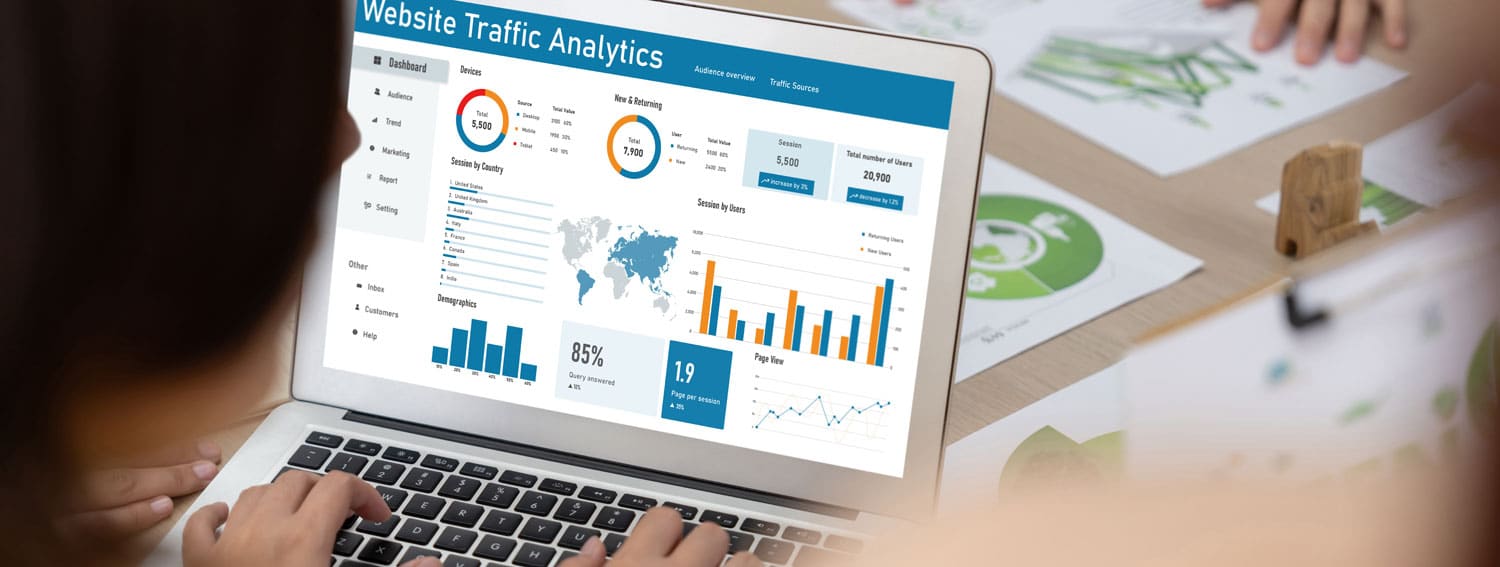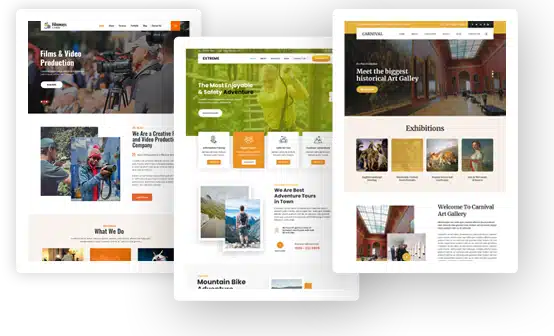The Ultimate Guide To Custom Website Design In 2025
Key Takeaways
- Your website needs to immediately communicate value and guide visitors toward action, or they’ll bounce to competitors
- Define specific business objectives, understand your audience’s actual behavior, and plan for mobile-first experiences before touching any design elements
- Page load time directly impacts both search rankings and conversion rates; every design choice must consider performance implications
- Your site must work flawlessly across all devices, with each screen size potentially requiring different navigation and content priorities
- SSL certification affects both search rankings and customer trust; implement it from day one, not as an afterthought
- Match your CMS and hosting to actual needs, not imaginary future requirements; wrong choices become expensive to fix later
- Good UX design removes thinking from the user experience through clear visual hierarchy, intuitive navigation, and progressive information disclosure
- Technical SEO elements like proper site structure and schema markup are easier to implement during initial development than retrofit later
- Set up proper tracking from launch to measure what actually matters for your business goals, not just vanity metrics
- Build architecture that allows for expansion and integration with new tools without requiring complete rebuilds
- Launch with a solid foundation, then optimize based on real user data and feedback rather than assumptions

Your site has about 3 seconds to leave an impression. During that little window of time, visitors decide whether you’re worth the time or hit the back button and give your competition a try instead. Half-hearted templates and copy-and-paste designs simply aren’t cutting it anymore when millions of businesses are competing for eyeballs online.
The businesses that are winning this war aren’t employing the same drag-and-drop site builders that the rest of the world is using. They’re spending money on custom site design that resonates with their people, loads in a fraction of a second, and funnels visitors toward taking action. If you want to quit blending in and begin standing out, here’s how you can do it.
Start With Strategy
Most businesses automatically jump into discussing colors, design, and features without having a clue what they want their site to do. You might think this is a no-brainer, but you’d be surprised at how many custom design projects get into trouble because no one took the time to get the fundamentals right first.
Start with your goals, but make them concrete. It can be generating leads for your sales team, direct selling online, or building trust with prospective customers that are looking at your industry. Every goal requires a different approach to everything from the structure of your home page to your channels of conversion.
Your audience research will need to look past demographics and income brackets. How do they behave online? Do they search on mobile during lunch breaks or do deep-research on their home PCs? What are they lying awake at night concerned with, and how do you get your site talking to those fears in advance? It’s all this information that will guide every design decision you’ll be faced with.
All your traffic will initially view your site on their mobiles, or maybe just on their mobiles. That completely changes your nav, content hierarchy, and even what pieces of functionality get included. For example, a dental website should have a responsive design layout, meaning that it can be easily viewed on any device. This is crucial because nowadays many people use their mobile devices to search for information online.
Master the Non-Negotiables
Slow pages are killing your conversion rates. Google’s been explicit about slow sites being dug in deep with search results, and consumers fleeing in a matter of seconds if your page loads slowly enough. The differential between a 2-second load time vs. a 5-second load time can halve your conversions.
This means that each of your design choices needs to consider performance. Those stunning high-resolution hero shots better be optimized. That smooth animation needs to be lightweight and relevant, not just visual candy that lags the entire thing down.
Responsive design has evolved a lot from “get things to fit on smaller screens.” Your design needs to work flawlessly when someone is viewing it on their desktop screen, phone in portrait, or tablet. Each screen size might need slightly different navigation behaviors, content layouts, or interaction patterns.
SSL certification used to be an optional feature on most websites. Now customers insist on it, and search engines penalize websites without it. But having SSL security from the beginning is a cinch when you’re building custom.
Choose Your Platform
Picking the wrong foundation for your own website would only lead everything else to fail subsequently. Platform choice affects the development cost, how easy or hard it will be to produce future updates, introduce functionalities, and maintain security current down the road.
For example, Magento 2 is ideal if you have a complex ecommerce site with many products and need complex inventory management. Yet if you are a consultant that needs three pages and a contact form, you’re probably overengineering. The key is to compare your platform to your real requirements, not your hypothetical future requirements.
This is where it helps to have experienced developers on your side. Organizations like mws.dev understand the nuance of different platforms and can guide you towards decisions that will pay off now as well as realistic plans for future growth. They’ve seen how businesses decide on platforms because they need features they feel they’ll ever require versus what they’re going to use.
Your web hosting decision directly impacts your site’s performance. Managed hosting costs more upfront but often saves money long-term through better security, automatic backups, and technical support. Cheaper hosting might seem appealing until your site gets hacked or goes down during your biggest sales period.
Don’t underestimate the domain name selection, either. Your own domain name becomes a part of your brand identity, and private domain registration keeps your personal information out of public databases. These might seem like inconsequential things, but they do contribute to your professional credibility.
Design for Humans
Most websites fail because they make users think. Your users shouldn’t need to work out how to access what they want or know what you do. Good UX design eliminates friction at every stage, giving direct paths from landing page to conversion.
Visual hierarchy is high-end, but it involves controlling where people naturally go to look first, second, and third. Your most important message must be unmistakable, with secondary information still available but not fighting for eyes. That happens by using contrast, space, and judicious use of color; not by spreading everything out and making it big.
Navigation is more sophisticated than plain menu bars. Progressive disclosure is especially in line with complex businesses. Instead of blinding your visitors with all the services you do, reveal information as they show interest. A visitor who comes to your homepage gets the top-level view, while someone who’s about to buy gets the technical details.
Typography is also important. The fonts you select have personality and professionalism behind them before a single word is read. While Google Fonts offers nice options that won’t slow your site, custom typography can make you stand out when money is no object.
Build SEO Into Your Foundation
Custom website design offers special search engine optimization opportunities that template-driven solutions frequently can’t replicate. From scratch, you can build your site architecture to accommodate SEO objectives while delivering outstanding user experiences.
Technical SEO features are added to your bespoke design right from the beginning. These include properly formed headings, optimized URL structures, and schema markup that enable search engines to view your content. Such building blocks are a lot easier to get right at the development beginning than to retrofit.
Content optimization methods are hand in hand with unique design elements. Your design should offer simplicity in content creation and editing that works in both user and search engine favor. This might involve unique layouts for content types or plugin functionality with SEO software to track performance.
Local SEO considerations are relevant largely for businesses that have physical operations within specified geographical areas. Custom design allows you to easily integrate location-specific content throughout your site without having to unflattering place them within generic templates.
Track Performance and Optimize Continuously
Web performance directly affects user experience and search engine rankings. Custom design gives you complete control over performance optimization, ranging from image compression techniques to coding layouts that guarantee low load times.
Analytics integration must be designed from the start instead of as an afterthought. Google Analytics gives great insights into user actions, but for the data to be useful, your design must have set up proper tracking. This involves conversion tracking, goal setup, and custom events that make sense with respect to your business goals.
Knowing metrics such as Bounce Rate and conversion funnels can help you refine your custom design in the long run. While template sites might have a lack of optimization options, custom designs can be fine-tuned repeatedly with actual user data.
Beyond simple traffic figures, website analytics now tracks user behavior patterns, scroll through the site, and interaction rates with certain parts of the design. This information is priceless for repeated optimization.

Future-Proof Your Investment
Custom website design in 2025 usually involves advanced features that were impossible a few years ago. AI-based elements, from chatbots to content suggestion, can significantly improve user experiences if well-planned.
Progressive web app features obfuscate the line between mobile apps and websites. Custom design allows you to natively incorporate these features seamlessly, maybe with offline capability, push notifications, and app-like interfaces that people can install on their devices.
Integration capabilities become increasingly important as businesses rely on more specialized solutions. Easy integration with CRM systems, marketing automation systems, and industry-specific applications that might not be supported through template solutions is achievable through custom design.
Future-proofing your investment includes structuring flexibility into your custom design. You can’t project every future need, but good architecture enables extension and adaptation without reconstruction.
Measure What Matters and Keep Improving
Your custom website launch is the start, not the finish, of the optimization process. Having distinct success metrics allows you to know if your design is fulfilling its objectives and where it may be necessary to adjust.
Conversion rate tracking provides direct insights into your design’s effectiveness. This goes beyond simple contact form submissions to include micro-conversions that indicate user engagement, such as newsletter signups, resource downloads, or social media follows.
User feedback collection should be built into your ongoing optimization strategy. While analytics provide quantitative data, qualitative feedback from actual users reveals insights that numbers alone can’t provide.
Regular performance checks keep your competitive edge keen. With shifting web technologies and shifting user expectations, ongoing reviews ensure your custom design stays current with the current standards and user needs.
Conclusion
The key to success is seeing custom design as a strategic business asset, not merely a virtual brochure. If planned and implemented correctly, your custom website is a powerful asset that generates leads, builds brand credibility, and assists in your growth objectives for years to come.
By focusing on your needs but staying true to your brand DNA, you’ll be creating online experiences that stand out in hypersaturated markets and drive measurable business results.

